Horses have been among our loyal companions since long ago, some of whom are famous. This text is on the most famous horses in history.
Compared with other animals, dogs and horses have had closer relationships with humans. Since a long time ago, we have been using horses as our rides to go around and carry our loads. Besides that, we have grown a better relationship with them as they are capable, beautiful, fast, and loyal. These attributes made some of them pretty famous in human history. If you want to know about these loyal companions, continue reading this article of Tech Trends on the greatest horses of all time.
Most Famous Horses in History; The History Makers
Arkle
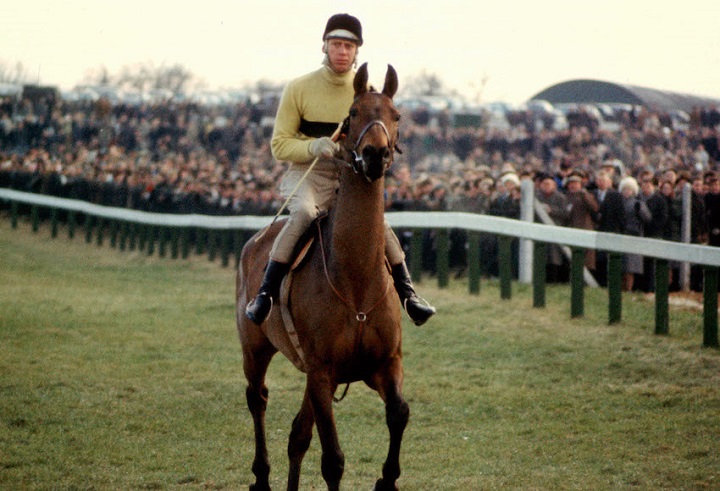
The late racing comentator Sir Peter O’Sullevan called him an ‘a freak of nature,’ and handicappers had two weighting systems — for when he was running and when he wasn’t. Nevertheless, the fame of ‘Himself’ extended a long way past his full go-around of Cheltenham Gold Cups (1964-66) and 1964 Irish Grand National triumph.
Stamps and tea towels were decorated with his picture, songs were composed (‘Look behind you Willie Robinson, man what are you about?’), the motto ‘Arkle for President’ was painted on a Dublin wall, and letters addressed to ‘Arkle, Ireland’ consistently made it to his stable door. No wonder Arkle is among the most famous horses of all time.
Beautiful Jim Key
Renowned horses aren’t just found on battlegrounds or race tracks. The narrative of Beautiful Jim Key, one of the greatest horses in history, goes in a different direction. This attractive horse was a performer during the turn of the 20th century. He was known as the savviest horse on Earth and could, among numerous abilities, count and do the math, spell words by choosing letters from an alphabet, cite Bible verses, tell time, use a phone, and take cash to a cash register and bring back correct change.
The horse and his trainer were a tremendous act, going around the country performing before stunned crowds from 1897 to 1906. They were the greatest act of the 1904 St. Louis World’s Fair. Toward the end of their tours, they were seen by an estimated 10 million people.
But perhaps equally as wonderful as the horse’s abilities was the account of his coach. “Dr.” William Key was a former slave and a self-taught veterinarian who advocated for the kind treatment of animals. He trained Beautiful Jim without the use of a whip.
Bucephalus
Now let’s go back — way, way back — in history. One of the most famous horses in history of antiquity is the most loved horse of Alexander the Great. As indicated by old records, Bucephalus was a huge black stallion and, as the legend goes, was wild until a young Alexander entered the scene. The skittish horse would raise when anybody approached him yet was at last calmed when Alexander turned him toward the sun, putting his shadow — the source of his fears — behind him.
Old History Encyclopedia expresses: “According to Plutarch, as Alexander returned to the arena with Bucephalus and dismounted, Phillip said, “O my son look thee out a kingdom equal to and worthy of thyself, for Macedonia is too little for thee.” Historians claim this taming of the wild Bucephalus was a defining moment in the young ruler’s life, exhibiting the confidence and determination he was to show in his conquest of Asia.
Comanche
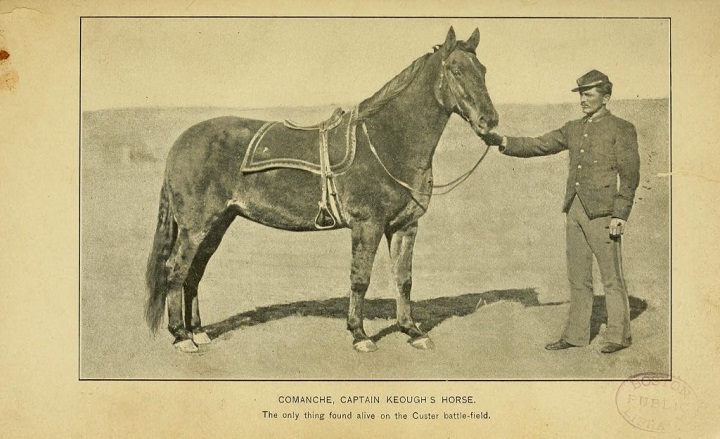
Comanche is not only among the greatest horses of all time, but often referred to as the only overcomer of the Battle of Little Big Horn. (About 100 different horses made due yet were caught by the victors.) The mount of Captain Myles Keogh Comanche was severely injured in the battle, including seven bullet injuries, and members from the Army found him in a gorge two days after the event. He was collected and cared for, and he before long recuperated from his injuries.
This wasn’t the first time the stoic horse needed to endure wounds. For sure, his durability acquired him his name. During a battle against the Comanche in 1868, he was shot by an arrow in the rump and yet continued on with Keogh on his back. After that day, he was named “Comanche” as a way for respecting his courage and faithfulness. He was injured 12 times during battles, including those injuries sustained during his final battle at Little Big Horn.
Copenhagen
Many of the most famous horses of all time are those that served close by people during war. This is valid for a 15-hand-high, ornery stallion named Copenhagen, who acquired fame after carrying the Duke of Wellington for 17 consecutive hours in the Battle of Waterloo. Copenhagen was born in 1808 and was of thoroughbred and Arabian stock. The latter breed gave him particular stamina and his fiery temperament.
When the Duke dismounted Copenhagen after the lengthy fight, he gave Copenhagen a pat of gratitude on the flank. Be that as it may, his grumpy — and apparently tireless — steed nearly took his head off with a sharp kick. According to The Regency Redingote: “Copenhagen very nearly achieved what the French had failed to do throughout that gruelling battle. But the Duke was quick enough to avoid that lethal hoof, the last danger he would face on that terrible day. His groom took the stallion’s reins and led him away for a well-deserved rub-down and rest.”
Figure
One of the greatest horses in history, Figure was a small bay stallion, who stood only 14 hands high. However, despite his smallish size, he was solid, fast, and had a stylish way of moving. At three years of age, he was given to Justin Morgan, a teacher and composer, as payment for a debt Morgan was owed.
While under Morgan’s care, Figure acquired a popularity for his capabilities as a workhorse and his speed as a racehorse. Figure broadly beat two New York race horses in a 1796 sweepstakes race, and he became known as the Justin Morgan horse.
As per the American Morgan Horse Association, “[Figure’s] ability to out-walk, out-trot, outrun, and out-pull other horses were legendary. His stud services were offered throughout the Connecticut River Valley and various Vermont locations over his lifetime. However, his most valuable asset was the ability to pass on his distinguishing characteristics, not only to his offspring, but through several generations.” The features and talents that made Figure stand apart may as yet be promptly seen in his grand foals.
Foxhunter
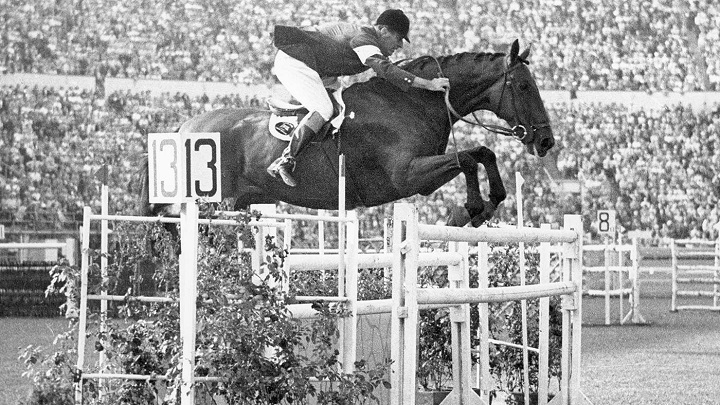
Foxhunter is credited with bringing showjumping to the consideration of the British public, making him one of the Britain’s most famous horses in history. Sir Harry Llewellyn started his partnership with the horse in the wake of purchasing the six-year-old bay for £1,500 in 1947. The gelding won a fantastic 78 global competitions, including the King George V Gold Cup three times. He won a bronze medal at the 1948 Olympics, then most strikingly, team gold, this being the only British gold medal at the 1952 Olympics. He resigned in 1955.
Norman Holmes of Thrussington, Leicestershire, produced Foxhunter. He purchased the horse as an unbroken four-year-old in 1944 for £60 from his breeder and hunted him with the Quorn only a fortnight later. He changed the horse’s name from Eelskin to Foxhunter, schooled him as a showjumper, and proceeded to win top-level classes at county shows. “He was very easy to break in, had a kind eye and so much quality,” said Norman.
Godolphin Arabian
Any youngster who has read Marguerite Henry’s “King of the Wind” knows something about the Godolphin Arabian, a shiny star among the greatest horses of all time. However, the novel is an exceptionally fictionalized variant of the stallion’s life. What isn’t fiction is that this renowned Arabian horse is credited as being one of the founding sires of the thoroughbred breed.
However, before becoming the Godolphin Arabian, the young horse experienced quite a journey. Likely born in Tunisia, the stallion was given to Louis XV of France in 1730 as a diplomatic gift. The disinterested king didn’t keep the horse, and eventually, the stallion made his way into the hands of the Earl of Godolphin, from whom he got his name. The stallion was the sire of a few extraordinary race horses. His genetic impression on thoroughbred horses lives on even today.
Man o’ War
A couple of years before Seabiscuit hit the track, Man o’ War was the star equine competitor of the early 1900s, giving thoroughbred racing a truly necessary boost when nobody gave much consideration to the sport. The hotshot horse was tall and massive with an insatiable hunger. He won one of his races by a noteworthy 100 lengths and beat Triple Crown champion Sir Barton by seven lengths in his final outing.
Man o’ War retired after two racing seasons and began a noteworthy vocation as a sire. He created 64 stakes winners and various other champions, including 1937 Triple Crown winner War Admiral and 1929 Kentucky Derby winner Clyde Van Dusen. As per ESPN, a Texas oil millionaire offered $500,000, then $1 million, then a blank check for Man o’ War, but his owner Samuel Riddle turned him down. “The colt is not for sale,” he said. No list of the most famous horses of all time is complete without his name.
Marengo
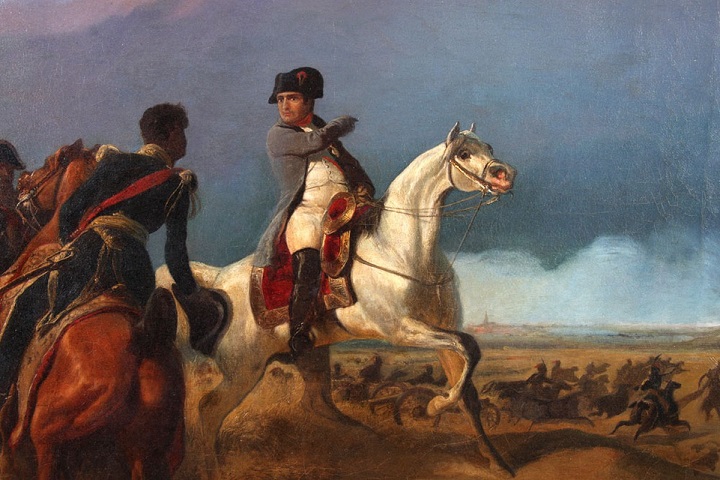
On the contrary side of the battlefront from Copenhagen was a horse named Marengo, a small gray Arabian who carried none other than Napoleon Bonaparte on his back. While Copenhagen returned after the battle, Marengo was caught and taken to Britain, where he was placed on exhibition. After his death in 1831 at 38 years old, his skeleton was preserved and stands at the Imperial War Museum in London until now.
The odd thing about Marengo is that while we know about him, there’s no mention of him anywhere in Napoleon’s stable records. As per Tom Holmberg, “It is possible that Marengo was a nickname of another horse. Napoleon had a penchant for giving nicknames (Josephine’s, his wife, real given name was Rose). All in all, Marengo is one of the greatest horses in history.
Sargent Reckless
A more modern-day war horse — one less notable in appearance than renowned Bucephalus, but similarly as notable at heart — is Sargent Reckless. She is perhaps the most decorated horse in U.S. military history. The young mare became part of the U.S. Marine Corps in 1952 when Lieutenant Eric Pedersen bought the mare from a young Korean man, and she became a pack horse carrying ammunition for recoilless — or “reckless” — rifles and other supplies to the soldiers during the Korean War.
As indicated by Robin Hutton, “During [a] five-day battle, on one day alone she made 51 trips from the Ammunition Supply Point to the firing sites, 95 percent of the time by herself. She carried 386 rounds of ammunition (over 9,000 pounds — almost FIVE TONS! — of ammunition), walked over 35 miles through open rice paddies and up steep mountains with enemy fire coming in at the rate of 500 rounds per minute”. If you are making a list of the most famous horses in history, open a spot for this one.
Seabiscuit
Many race horses have had films made recounting their story, including Phar Lap, Secretariat, and Ruffian. Yet, the highest grossing movie about a horse — any horse — to date is Seabiscuit. Nobody can hear this horse’s story and not feel a swell of affection.
With a not exactly ideal physique, short legs and an at first lethargic character, Seabiscuit appeared to have little potential despite being descended from legendary racehorse Man o’ War and, farther back, the Godolphin Arabian. That is until he arrived in possession of trainer Tom Smith and rider Red Pollard. Many know him as one of the most famous horses of all time.
Trigger
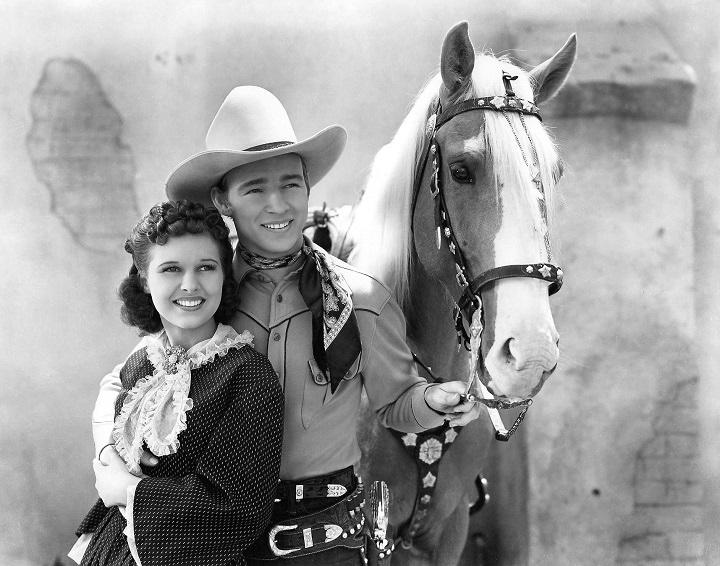
Among the greatest horses in history to grace the television screen was Trigger, the palomino stallion and sidekick of Roy Rogers. Born in 1932, Trigger was initially named Golden Cloud until he was tested by Rogers as his potential mount for a film.
As per IMDB, “Smiley Burnette, who played Roy’s sidekick in his first two films, was watching and mentioned how quick on the trigger this horse was. Roy agreed and decided that Trigger was the perfect name for the horse. Roy purchased the horse for $2,500 and eventually outfitted it with a $5,000 gold/silver saddle.” It was a perfect pair, as horse and cowboy worked superbly together.
Warrior
Warrior, one of the most famous horses in history, was born in 1908, a compact thoroughbred by Straybit out of Cinderella, and prophetically named. Of those famous horses who participated in war, Warrior’s perhaps be the best story. Ridden for most of his 33 years by his breeder, General Jack Seely, Warrior survived four years of war. He spearheaded a crucial and gruesome cavalry charge to check the German offensive in Moreuil Wood in 1918. It is scarcely believable that Warrior survived all those blood-soaked battles in France. The Canadian cavalry, led by Seely, would say “the bullet hadn’t been made that could kill Warrior”.
Related articles:
.
Source: Tech Trends